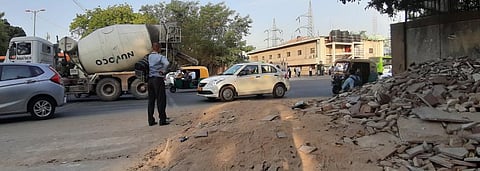

India recycles just one per cent of its construction and demolition (C&D) waste, a new report released by Delhi-based non-profit, Centre for Science and Environment (CSE) on August 25, 2020, has shown.
The country generates an estimated 150 million tonnes of C&D waste every year, according to the Building Material Promotion Council. But the official recycling capacity is a meagre 6,500 tonnes per day — just about one per cent.
What’s more, unofficial estimates of the total waste generated in the country put the figure at three-five times more than the official estimate.
Another Brick off the Wall: Improving construction and demolition waste management in Indian cities, also goes on to recommend a viable plan of action.
“Our study shows that as many as 53 cities were expected to set up recycling facilities to recover material from C&D waste by 2017 — but only 13 cities have done that by 2020. This is unacceptable when the demand for primary building material, including minerals, stone, sand, iron ore, aluminum and timber, is growing at an unprecedented rate,” Sunita Narain, CSE director general, said while releasing the report during an online Round Table.
She went on to add: “A significant proportion of construction waste can be recycled and reused and brought back to construction to substitute naturally sourced material. This demands a circular economy that can turn C&D waste into a resource. This can help reduce energy intensity and environmental footprints of buildings and infrastructure.”
Anumita Roychowdhury, executive director-research and advocacy, CSE and the head of the Centre’s Sustainable Urbanisation programme, said heaps of concrete, bricks and metal waste from construction were choking waterbodies, green areas and public spaces in Indian cities.
Toxic dust particles from the debris were polluting air at a time when cities had to reduce their particulate pollution by 20-30 per cent by 2024, under the ongoing National Clean Air Programme, Roychowdhury added.
The sorry state of affairs regarding C&D waste exists notwithstanding the removal of legal hurdles to using recycled C&D material in construction, according to CSE researchers.
The Bureau of Indian Standards has allowed the use of concrete made from recycled material and processed C&D waste. The Construction and Demolition Waste Rules and Regulations, 2016 have mandated reuse of recycled material.
Even the Swachh Bharat Mission has recognised the need for C&D waste management. Ranking points for C&D waste management for Swachh Survekshan 2021 have been doubled to 100 points, divided equally between management infrastructure and waste processing efficiency.
Cities will need to have a C&D waste collection system in place; notified charges for C&D services and segregation of waste in five streams. Under waste processing efficiency criteria, ranking points will be awarded based on the percentage of collected waste that is processed and reused.
This recognition by the Swachh Bharat Mission and the C&D Waste Rules offered an opportunity, according to Roychowdhury.
“Our new study has carried out a detailed analysis of the current C&D challenge as well as technical and regulatory barriers to implementation of the Rules. It has identified strategies needed to accelerate the implementation of the Rules and market uptake of recycled material. The analysis is supported by ground-reality checks in multiple cities,” she added.